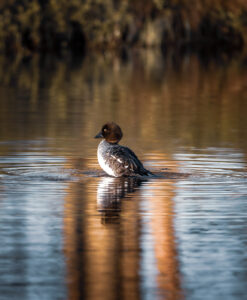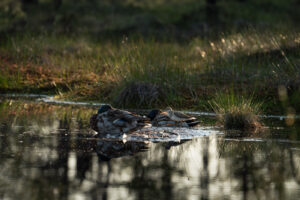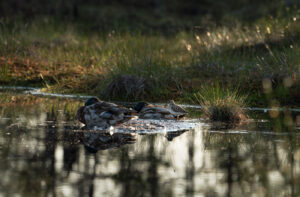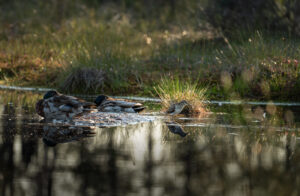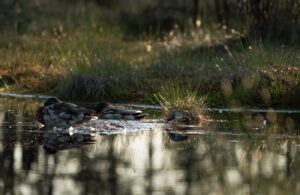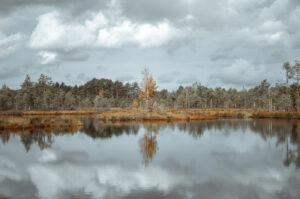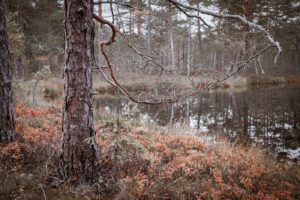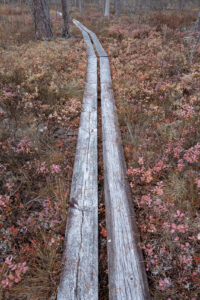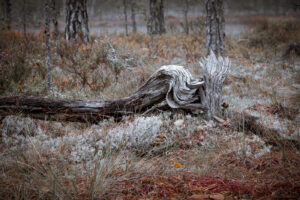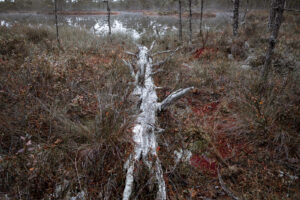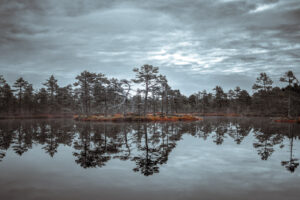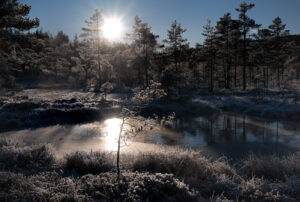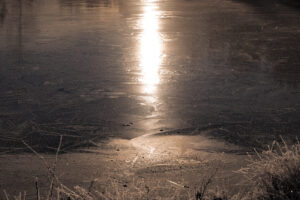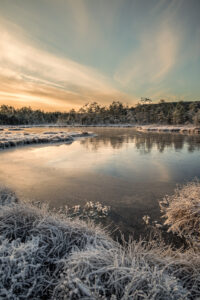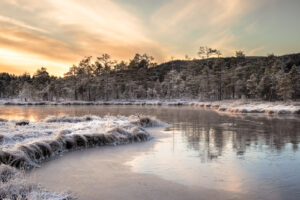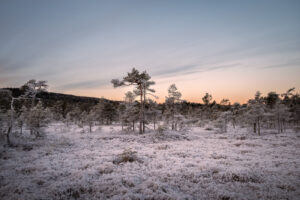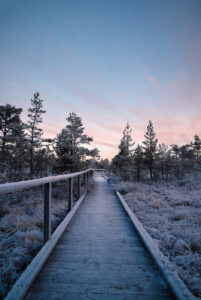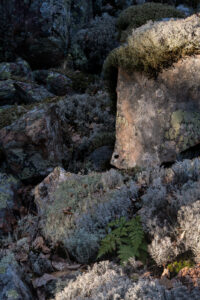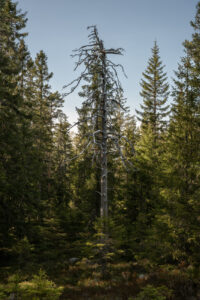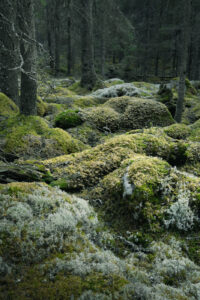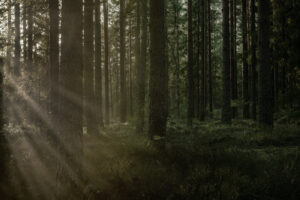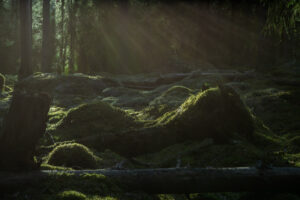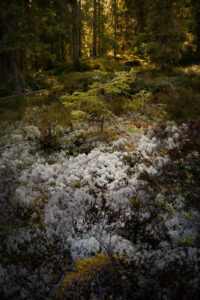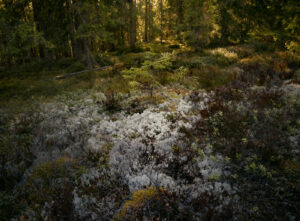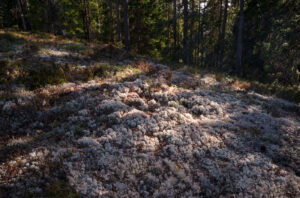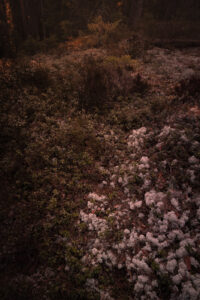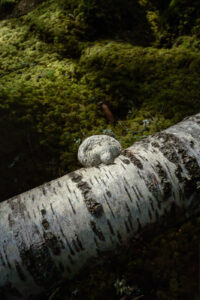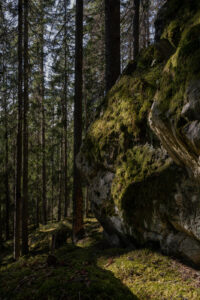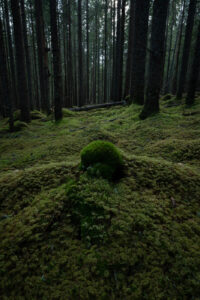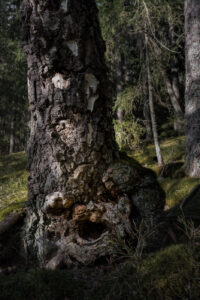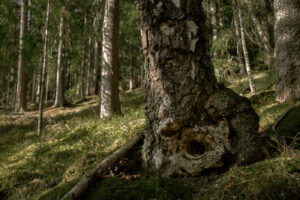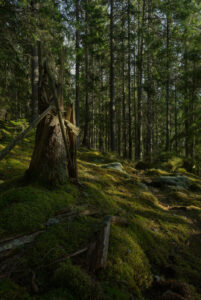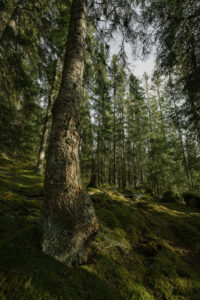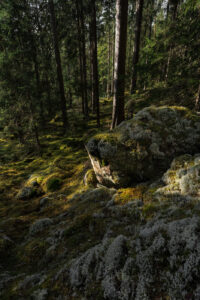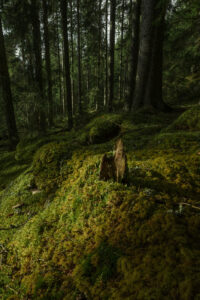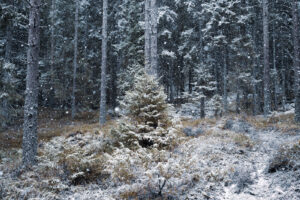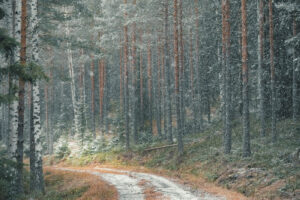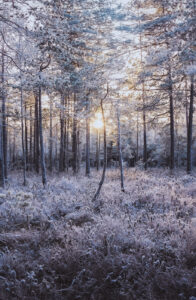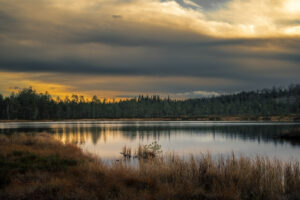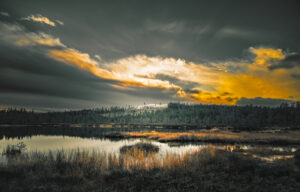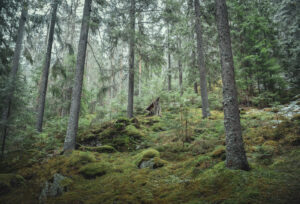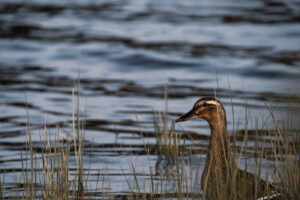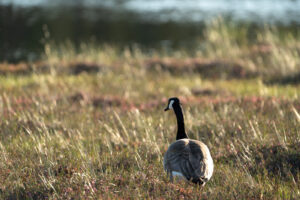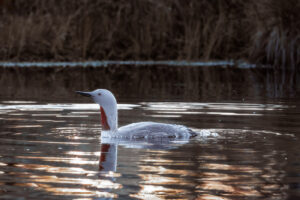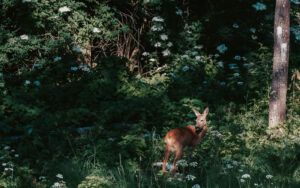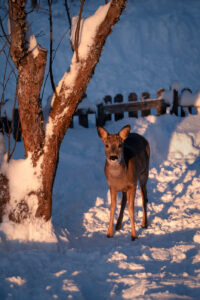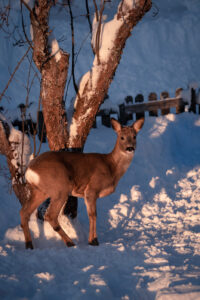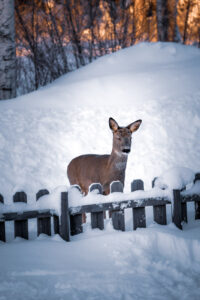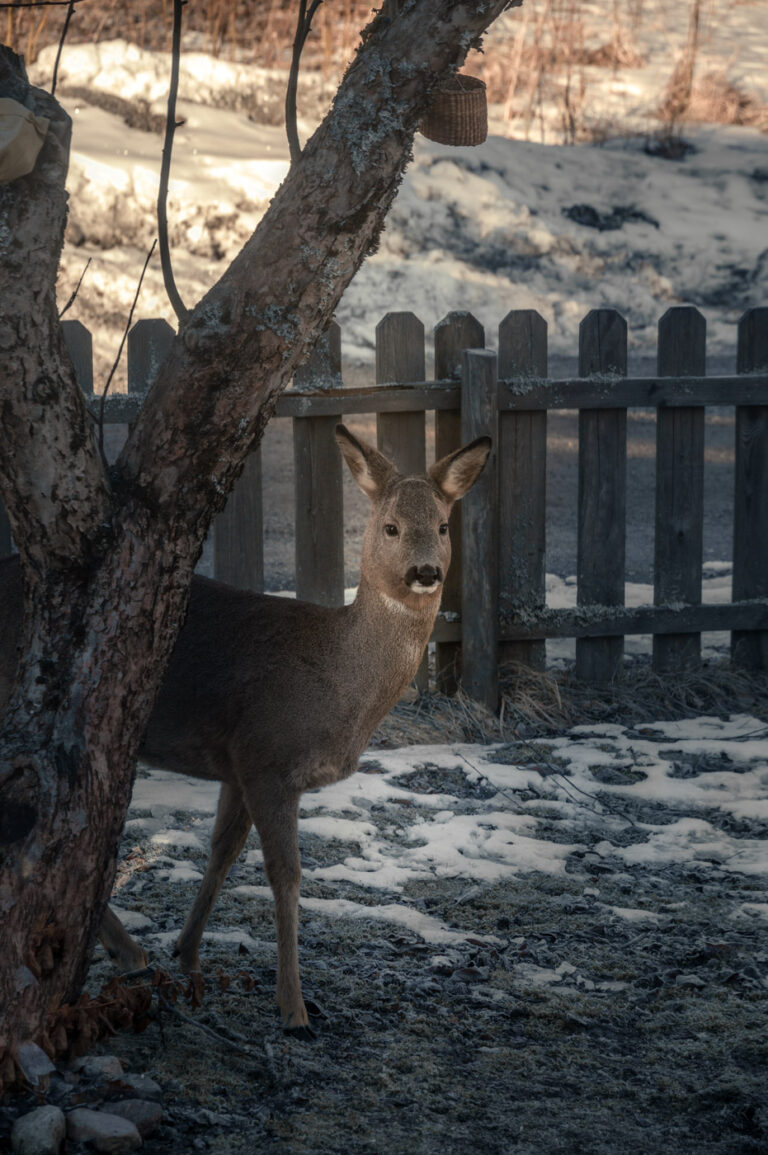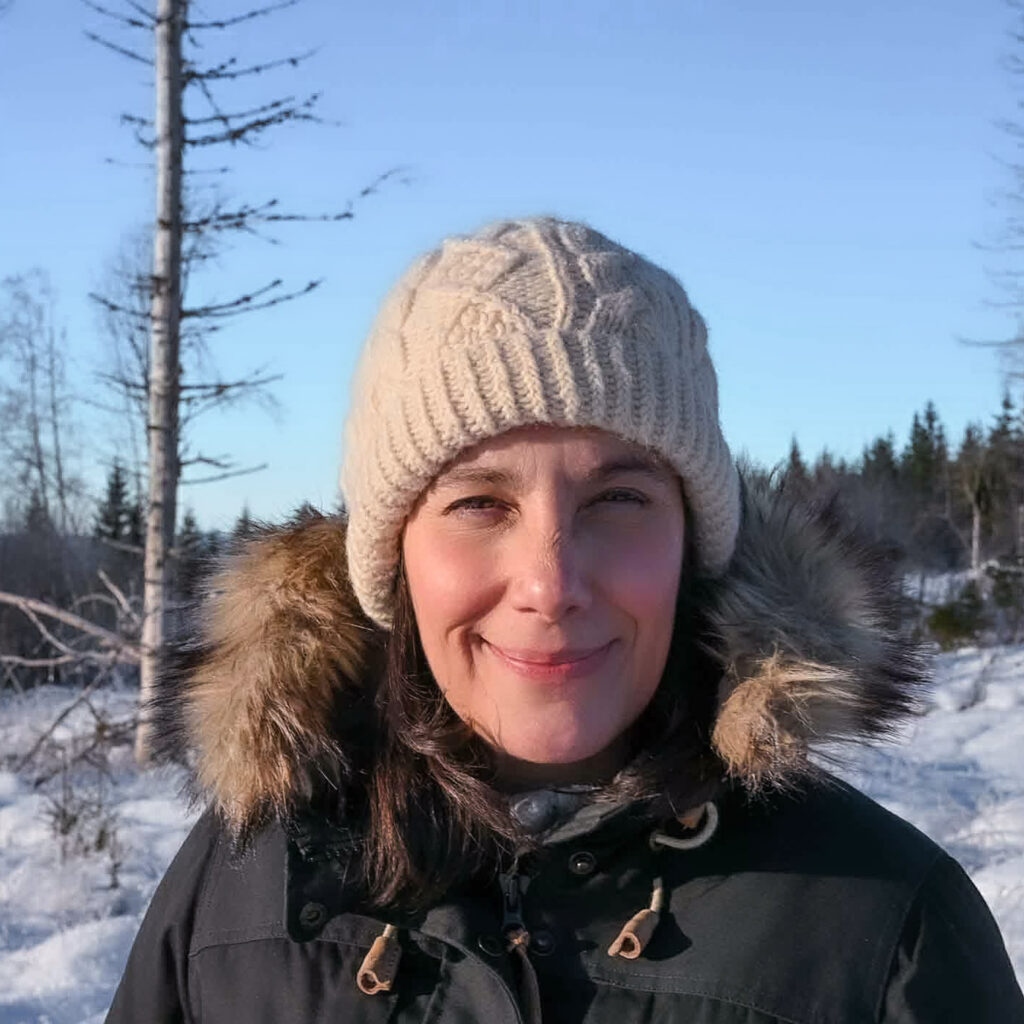Hi everyone, hope you are doing fine! Are you already enjoying spring?
Here in central Sweden, it looks like winter doesn’t want to let go this year!
Today, I would like to talk about a subject that is particularly close to my heart, winter feeding the animals of the forest, with special regards to deer, as where I live, they are the ones that are generally more used to venture in our gardens looking for food, along with birds and squirrels of course.
If you have been following this blog since my first posts, you’ll probably know that a couple of years ago I made friends with a family of deer, Tiril, the father, Juni, the mother (here above in her winter coat) and their two kids Bodin and Eira.
Juni has started visiting our garden on a summer day, she liked a lot the parsley that we were growing outside. We caught her with her paws in our vegetable garden boxes, but both my partner and I were so happy to be able to see her so closely, that we have decided to let her continue. Of course, she ate all of it!
Since then, she has visited more and more regularly, even when the parsley was finished and there wasn’t anything else to eat … first alone, then accompanied by her companion Tiril, and after a while with her fawns too.
I have never thought about feeding wild animals, the idea never really crossed my mind, and I think I saw the first deer feeder only 3 years ago when I moved here during one of my first walks in the forests.
However, last winter, I started feeding birds, and one morning, I caught Juni eating the seeds that they were throwing on the ground. It was a very cold day, everything was frozen and the ice was thick on the ground. She was eating eagerly and for the first time I realized that she looked very skinny. I started wondering how she would feed during the winter season and I decided to do some researches on the Internet.
That’s when I found out that deer actually struggle to find food in winter, in fact they eat a lot more during the autumn season to get some extra fat and build up a reserve to help them survive when the food in the forest is scarce. But if the winter is particularly harsh, with a lot of snow and ice, it gets really hard for them to find anything to eat and by the end of February the reserve in their body is totally gone. Some of them starve to death.
Of course, I did not want that to happen to my deer friends so I have continued my researches to find out how I could help and feed them. What I found were controversial opinions.
Here in Sweden, winter feeding is generally allowed and in certain circumstances and under some conditions, even encouraged.
However, in many countries it’s not only discouraged but it might also be forbidden by law for different reasons.
I read a lot about pro and cons arguments and I was particularly touched when I found out that people might end up damaging the animals out of kindness as they feed them with whatever they think it might be good for them or with whatever they just have at home.
In fact, every animal has its eating habits and needs that most of the time are completely different than the ones of humans.
Deer for examples are herbivores and ruminants, they eat different kinds of vegetation, including grass, leaves and stems of woody plant. They also eat berries, nuts and some fruit. This doesn’t mean though that they can eat all kind of vegetables that we eat, in fact some of them are even toxic to them like potatoes, kitchen scraps (carrot pulp, fruit peeling, or herb stems) grapes and raisins, just to name a few …
After a lot of reading I have realized that the matter was more complicated than just throwing some left overs whenever I could, and that if I really wanted to help my friends I had to follow all the good practices in order to make sure to cause them no harm.
That's what I learnt.
First of all, it’s important that the area where you feed them is not exposed to any perils and that it is not dangerous for them to reach it.
My house is located on a forest hill above a little village, it’s a very quite area, with just a few houses and no car traffic at all. The forest is just a few meters from my garden. This means that deer can easily pass from the forest to the garden in a few steps without incurring in any dangerous situation.
If that wasn’t the case and my garden was in a crowded area with cars passing frequently, I would rather leave the food in the forest or avoid feeding them at all. You don’t want to see them ending up under a vehicle, do you? Also, the less disturbance when they eat the better, as they are wary and can get easily scared.
Get advice from your local animals shop or hunters association and only buy food which is specifically meant for the animal you are feeding. This way, not only you avoid harming them with food they cannot eat, but you are also sure that they get the nutrients they need to go through the season.
Be aware though, it can become expensive in the long run. In fact, once you have started feeding them, they will rely on you and you cannot stop until spring comes. So, it’s better to avoid starting at all if you cannot afford it.
Only feed them if and when it’s really necessary, generally in late winter, when their body reserve is exhausted and when there is very little left on the ground for them to eat, which is particularly true if it has snowed a lot or it’s very icy.
You don’t want to feed them if it’s not needed. Never do that in spring, summer or autumn.
Don’t give them too much food so that they are forced to keep on looking for it themselves. Consider the right amount so that it only represents a supplement to their diet.
When it’s early spring and the first leaves and buds start appearing, gradually reduce the frequency before you stop feeding them. You’ll notice that they will come less and less as soon as they will find something they like more, like the juicy fresh leaves they are so fond of. Be aware though, by winter feeding them, you will have sent them the message that it’s OK to come to your garden to eat. So, they will still visit to check if there is something interesting whatever the season. If you like to grow vegetables, plants and flowers, I suggest to avoid feeding them in winter, unless you are ready to install green houses, as they will surely steal whatever your have planted in your garden if it’s of their liking.
Check with your council whether there is any ban against feeding wild animals. Also, look around you. Are your neighbors’ gardens well kept and full of flowers and plants? If so, I strongly suggest that you ask them whether they are happy with your feeding activity or you might end up having arguments with them because of the possible damages to their yards.
When I moved here, deer were already used to roam among the gardens. Also, the region where I live is a woodland, as the major part of Sweden. And although in the south the situation might be different, here in the center-north regions gardens are mostly decorated with plants and flowers that grow wild due to the cold climate and the short warm seasons.
Keep yourself at distance from the animals and don’t let them get to trust you too much. As much as you would love to hug them and be with them, it’s important that they keep to be wary of you, as deer are prey for us humans! It’s just a way to protect them. They will know in any case that it’s you feeding them, don’t worry.
Be aware that it’s a commitment. As I mentioned already, once you start feeding the animals, they will rely on your supplementary meals and they will regularly come to your place, because they know they will find food. You must make sure that food is always available when they come to eat. In fact, deer may travel a long distance looking for food and they need energy to do it. If they don’t find it at your place as expected, it might be too late for them to move somewhere else looking for alternative sources that are scarce anyway.
So, forget taking any vacation in the period you are feeding them, unless there is someone else who can replace you 🥴😊
Be ready to wake up early even during weekends as dawn and dusk is when they usually come to eat (when it’s quieter). Depending on how large your feeder is, how many are they, and how much of the food is taken away by other animals, you might need to feed them even three times a day. So, think carefully whether you are able to keep up with the task. If you start and then you abandon them you are causing more harm than not feeding them at all.
In fact, I think that the final and most important message is, “remember that you are doing this for them not for you”. Do not expect any other satisfaction than to be able to see them at close distance, which is wonderful anyway! They are wild animals, not pets. And they should remain so, for their own good.
If you follow these suggestions, and whatever other advice is given by your council, you will help your forest friends surviving the harsh winter and prospering. You will also live a precious experience! My garden is now regularly visited by different species of birds, two beautiful and funny squirrels and my family of deer friends. Nothing else relaxes me more than watching them by the window and it’s a great satisfaction to see them healthy and happy.
I leave you with a little video of my friends eating at our little restaurant under the apple tree 😊
Till next time, take good care of you.
Love,
Simona 🤍🦌🤍

